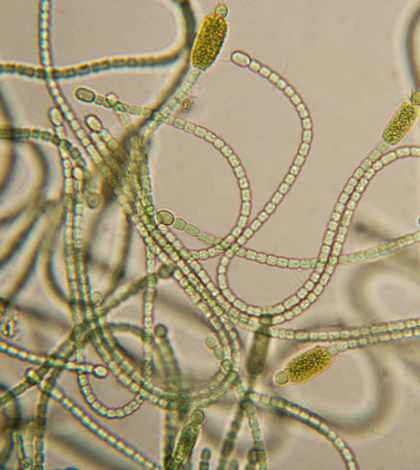Blue-Green algae is blooming throughout California. Authorities are warning both residents and visitors, including swimmers, boaters and recreational users to avoid direct contact with, or use of, waters containing potentially harmful blue-green algae (cyanobacteria) and to avoid swallowing or inhaling water spray in an algae bloom area.
Exposure to blue-green algae can cause rashes, skin and eye irritation, allergic reactions, gastrointestinal upset, and at high levels, exposure can result in serious illness or death, according to the California Department of Public Health. Blooms of blue-green algae can look like green, blue-green, white, or brown foam and scum floating on top of or suspended in the water.
Dogs are especially vulnerable to getting sick from exposure to blue-green algae. There have been several reports through the years of dogs dying following exposure.
“We want people in the area to be on the lookout for water with green material floating in the water,” Dr. Marilyn Underwood, the director of the Environmental Health Division of Contra Costa Health Services, the county health department. “Even if you’re not sure it’s blue-green algae, it’s best if your family and your dogs do not to go in the water. When in doubt, stay out.”
The Statewide Guidance on Cyanobacteria and Harmful Algal Blooms recommends the following for blue-green algae impacted waters:
- Take care that pets and livestock do not drink the water, swim through algae, scums or mats, or lick their fur after going in the water. Rinse pets in clean water to remove algae from fur
- Avoid wading, swimming, or jet or water skiing in water containing algae blooms or scums or mats.
- Do not drink, cook or wash dishes with untreated surface water from these areas under any circumstances; common water purification techniques (e.g., camping filters, tablets and boiling) do not remove toxins. (Campers, hikers and fishermen should be especially aware.)
- People should not eat mussels or other bivalves collected from these areas. Limit or avoid eating fish from these areas; if fish are consumed, remove guts and liver, and rinse filets in clean drinking water.
- Get medical treatment immediately if you think that you, your pet, or livestock might have been poisoned by blue-green algae toxins. Be sure to alert the medical professional to the possible contact with blue-green algae and notify the local, county public health department.
Blue-green algae has been confirmed at a number of locations through the state including: San Luis Reservoir and O’Neill Forebay located in Merced County on the western edge of the San Joaquin Valley; Discovery Bay in Contra Costa County; Pit River arm of Shasta Lake; Lake Britton in Northern California; in some water bodies within Humboldt and Mendocino counties including the South Fork Eel, Van Duzen and Trinity rivers; Copco and Iron Gate Reservoirs on the Klamath River in Northern California; and, Silverwood Lake in San Bernardino County.
Typically, algae warnings come out between late July and early August, coinciding with low flows and sustained high temperatures in the inland areas. These factors, coupled with drought conditions, may cause blue-green algae to grow earlier than usual.
Human activities can have a big effect on nutrient and water flows in rivers, streams and lakes. Nutrients found in fertilizers, animal waste and human waste can stimulate blooms. Excessive water diversions can also increase water temperatures and reduce flows.
People can take the following measures to prevent algal blooms in our waters:
- Be conservative with the use of water, fertilizers and pesticides on your lawn, garden or agricultural operation.
- Avoid nutrient runoff by recycling any “spent” soil that has been used for intensive growing by tilling it back into gardens, or protect it from rainfall.
- Create shade and filter out nutrients by planting or maintaining native plants around river banks.
- Inspect and pump out septic systems every three to four years.
- Prevent surface water runoff from agricultural and livestock areas.
- Prevent erosion around construction and logging operations.
For further information on harmful algal blooms (HABs) go to: http://www.cdc.gov/habs/
 California Water News Daily Your Source For Water News in California
California Water News Daily Your Source For Water News in California


